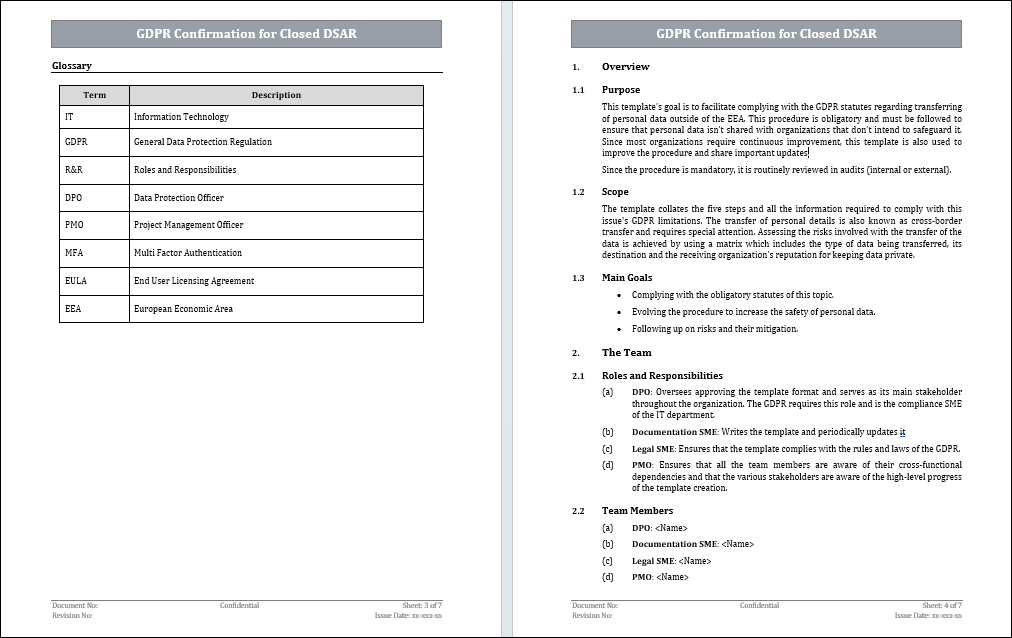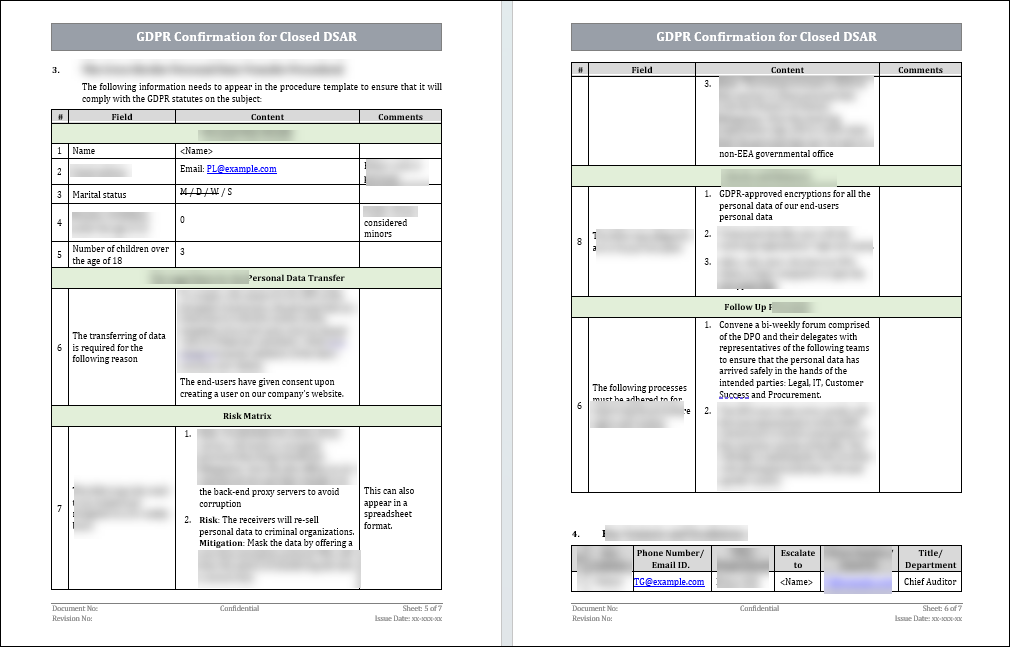GDPR Confirmation for Closed DSAR Template
Introduction
GDPR Confirmation for Closed DSAR Template is a document or form used by organizations to acknowledge and confirm the closure of a Data Subject Access Request (DSAR) in compliance with the GDPR. It serves as a formal notification to the data subject that their request has been processed and completed. DSAR Closure stands for Data Subject Access Request Closure. It refers to finalising or completing a Data Subject Access Request (DSAR). A DSAR is a legal right for individuals to request access to their personal data held by organizations. DSAR Closure occurs when the organization has fulfilled the request by providing the requested information to the data subject or has completed any necessary actions in response to the request.

Key Components of GDPR Compliance in DSAR Closure
- Data minimization: This principle stipulates that the end-users personal data should only be collected and processed to the extent necessary for the specific purpose for which it is collected. The organization should not collect or process more personal data than they need.
- Adequate data protection measures: The organizations that collect personal data have one main responsibility to their end-users: to keep it safe and out of the hands of malicious entities. This responsibility can be achieved by employing a combination of the following measures:
1. Encryption of personal data.
2. Pseudonymization of personal data.
3. Access control limitations and compartmentalization.
4. Security awareness training.
5. Creating a data breach response plan.
6. Regular data audits.
- Legal basis for processing: The end-users agree to certain T&Cs (terms and conditions) when they create a user on the organization's site. These include the right to collect, process and evaluate personal data by the GDPR data minimization guidelines.
Rights Exercised by Data Subjects
- Review of the specific privacy rights requested by the data subject: Once a request has been submitted, the organization's DPO (or delegate) needs to review the request and respond to it. This process must be completed within a reasonable timeframe, and the response must be sent to the requester using clear and day-to-day language.
- Confirmation of actions taken to address those rights:
1. Update the request's status to "Resolved" or "Rejected."
2. If the request was resolved, Include the response sent to the requester in the DSAR.
3. If the request was rejected, Explain the reasoning.
Anonymization or Deletion
- The organization will delete the end user's personal data once their information is used for its intended purpose. This will include all data on the main and backup servers.
- The DPO (or delegate) will conduct periodic audits to ensure no personal data is stored once it has fulfilled its purpose.
- Data Masking replaces the actual names and other identifying characteristics of the end-users with pseudonyms and other values so that if the personal data somehow leaks, it won't allow any malicious entity to use it for nefarious goals.
- Generalization helps in Aggregating the personal data of a group of end-users with similar characteristics not to identify any individual within that group.
- Confirmation of compliance in removing or rendering data unintelligible: Once one or more of the safety measures have been implemented, the organization must make a note of it and save it in a shared workplace. This confirmation can be shared with the end-users, auditors, etc.

Retention and Archiving
- Overview of any retention periods applicable to the DSAR: The GDPR doesn't specify a retention period for storing the end-users personal data. Each organization must create a robust process for determining the acceptable period of retaining personal data, and the DPO must ascertain that this process is adhered to.
- Confirmation of compliance with data retention obligations: Once the process has been put into place, the DPO must perform regular audits to ensure that it has been followed and that the actions taken as a result have been documented.
- Confirmation of compliance with GDPR regulation: Once the DSAR has been closed, it must be retained by the organization with a CRM (Customer Relationship Management) number to allow for follow-up, auditing responses and GDPR compliance.
Key Takeaways
The closure notice should include the following fields:
- The details of the responder (or data controller).
- The basic details of the requester.
- The status of the request.
- A link to the DSAR or the DSAR details.
- In case of a rejection, Inform the end-user of their right to escalate the request to the country's courts to enforce their request.
- A copy of the letter must be saved for audit purposes.


